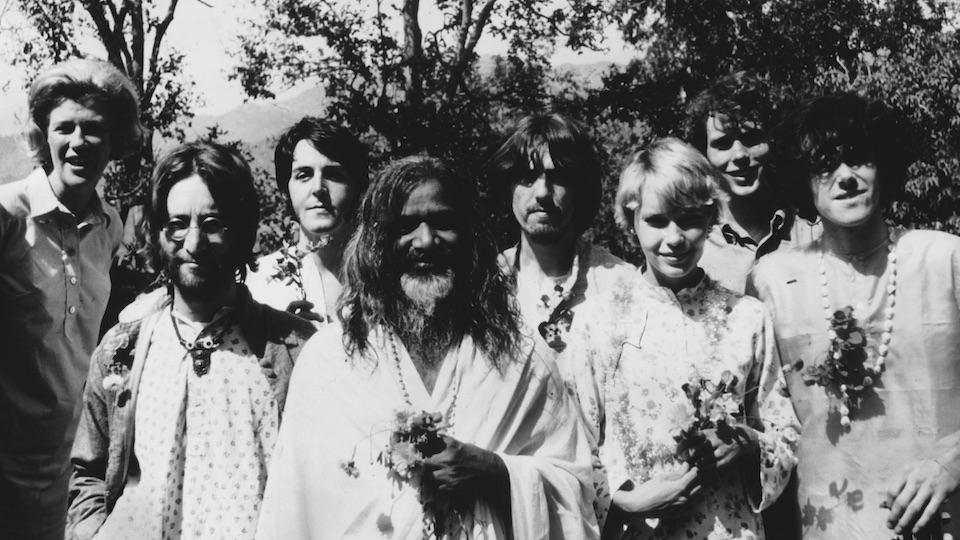August 2019 marked the fiftieth anniversary of the Woodstock Music and Art Festival, an event that epitomized the spirit of the sixties. As I discuss in Beatleness: How the Beatles and Their Fans Remade The World, many music fans, aged 12, 13, and 14 in 1969, were sad that they were “too young to go to Woodstock.” Nevertheless, these young people felt a strong affinity with Woodstock Nation, watching the event on the news or looking at the photo spread in Life magazine.
Related: “6 Things You Didn’t Know About Woodstock”
Throughout the sixties, the Beatles exposed young baby boomers to new sounds, images, and ideas, and these youngsters were well aware of the counterculture. Those with older siblings were even more tuned in, and, in mixed-age groups, discussed it all in mind-expanding conversations in dens and on playgrounds across America. Many boomers born between 1955 and 1958 say they grew up faster because of the Beatles and the cultural tumult of the sixties, but were “too young to be real hippies.”
Three years before Woodstock, these children listened closely to “Nowhere Man,” a distinctly different kind of pop song. Lennon’s clear, emphatic vocal challenged baby boomers of all ages to be actively engaged in the world and to have opinions about what they saw around them. Many fans said they heard the song as the Beatles telling them to “pay attention.” Perhaps the conspicuous harmonic tone, about one minute into the song, functioned as a clarion call to, what would emerge three years later, as Woodstock Nation.
A few months after “Nowhere Man,” in the summer of ’66, the Beatles presented young people with the equally emphatic “Rain.” Through the metaphor of weather, this psychedelic song pointed out the foolishness of straight society. These songs helped define the contours of “the generation gap.”
Then Revolver happened in August of ’66, presenting boomers with more psychedelic sounds and glimpses into altered consciousness. Some younger listeners recall being frightened by “Love You To,” “Tomorrow Never Knows,” “She Said She Said,” and even “Eleanor Rigby.” But they also remember intense conversation with older friends and siblings who helped them appreciate these songs.
A year later, during the Summer of Love, these young fans (and Time magazine) saw the Beatles as the hippie chiefs. Preteens and their older siblings had a splendid time with Sgt. Pepper, engaging with its mysterious cover and the eclectic mix of new and unexpected Beatle music.
The half-million baby boomers who showed up at Woodstock were those old enough to go, with or without parent’s permission. But millions of tuned in tweens and young teens, now in their early sixties, were absolutely there in spirit.
Related: “What the Monkees Meant to the Youngest Boomers”
Although the Beatles didn’t play at Woodstock, Beatleness permeated the event in spirit and sound. Richie Havens performed three Beatle songs, and Joe Cocker and Crosby, Stills, Nash, and Young each performed one.
Taking place less than two weeks after the Manson murders, which involved Beatles references written in victims’ blood, Woodstock challenged the newly emerging perception of hippies as violent and dangerous.
The deadly stabbing at the Rolling Stones’ Altamont festival four months later, while shocking and disturbing at the time, was, in retrospect, caused by a cascade of bad decisions on the part of the Stones’ machine. All things considered, violence was almost predictable. But a half-million people at Woodstock, many on drugs and lacking basic necessities, remaining peaceful and cooperative, was extraordinary.
Watching Woodstock on the news, John Lennon was moved by the unlikely peacefulness of such a large crowd and felt that his messages of peace and love were having an impact. Indeed, the peacefulness of the huge crowd, happily cooperating under challenging circumstances, is why the event has maintained its luster and historical significance, especially for those, still hippies at heart, who reject the broader cultural cynicism towards the era of peace and love.
Joni Mitchell, who couldn’t appear at Woodstock because of a previous commitment to appear on the Dick Cavett Show, was, like Lennon, moved by the event’s historical significance and wrote “Woodstock,” released in March ’70 on Ladies of Canyon. That same month, Crosby, Stills, Nash, and Young released their version on Deja Vu. Joni’s version was more spiritual, more contemplative, and seemed to capture the singularity of the event, whereas the CSNY version has a more celebratory quality; almost like a rallying cry.
A month after these songs were released, less than a year after Woodstock, the Beatles broke up. Then the first Earth Day took place. A few weeks after that, four students were shot and killed at Kent State while protesting the escalation of the Vietnam War. Fans’ six-year, real-time journey with the Beatles was over, Woodstock was a sweet memory, and the seventies had begun.
-Candy Leonard
-Photo: Getty Images





And it’s been down hill ever since.
Great article, I was fortunate enough to be at Woodstock at the ripe age of 15. I was with my 19 yr old sister and her bf. She gave me “Meet the Beatles” for my 9th bday, I bought every album as soon as it came out, still today at 67 I collect Beatle anything. The beatleness at Woodstock was very obvious, people sang the songs, hummed the tunes, and cried when Joe Cocker poured out “With a little help from my friends” the atmosphere at that point was like every human within 100 miles was your immediate family. No anger, no fear, etc. Just love and harmony, I’ve tried to be that 15 yr. old hippie my entire life
R.L.K.